 What is a
Weapon, anyhow?
What is a
Weapon, anyhow?The answer to this question is more complicated than one might think.
 What is a
Weapon, anyhow?
What is a
Weapon, anyhow?
The answer to
this question is more complicated than one might think.
By Richard Sanders, coordinator, COAT; editor, Press for Conversion!
The primary justification used
by City of Ottawa staff for leasing the municipal facility, Lansdowne Park, to
organizers of "Secure Canada 2008," is that this is not really an "arms
exhibition." One of the proofs offered to justify this bogus claim is that:
"We are advised by the show manager that weapons and firearms are not included
in these exhibits." (Source)
But whether or not real “weapons and firearms” even need to be exhibited at
military trade shows is a red herring.
City staff also argue that such a broad array of military and "security"
equipment will be marketed at “Secure Canada 2008” that it does not constitute
an arms exhibition. (The fact that
all military trade shows generally showcase a wide array of weapons systems, war
technologies and other "security" equipment is explained here.)
However, there is a basic underlying question that clearly still begs to be addressed: “What is a weapon?” To answer this question, let's begin by examining Ottawa City Staff's one example of a weapon, the simple old-fashioned "firearm."
Firearms R Us
Having evolved from Chinese "fire-lances," firearms have been around since the
1100s. They are generally defined as small, portable weapons that shoot metal
projectiles through a barrel using an explosive propellant. By the time
Christopher Columbus brought Spain's Conquistadores to the Caribbean in a
genocidal search for gold, their primitive matchlock
muskets were instrumental
in efforts to enslave America's civilizations. Over the succeeding centuries,
warfare has had to change to keep pace with rapid evolution of firearm
technology.
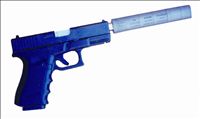 Firearms now come in a
bewildering variety. Here is but one example. This photo comes to us straight
from the website of
Tactical & Survival Specialties Inc. (TCCI), one of the proud
exhibitors at "Secure Canada 2008." (Source)
Among the many weapons and weapons-related products that TCCI sells is the
US-Army-contracted 239-ABRX "Abraxas Suppressor." TCCI says its versatile
product is "highly compatible” with 9 mm “Beretta, Glock or Taurus" pistols. (TCCI's
price is a mere $616.25.) A "suppressor" is what
normal people—those outside the world of assassins and other professional
killers—would call a "silencer."
Firearms now come in a
bewildering variety. Here is but one example. This photo comes to us straight
from the website of
Tactical & Survival Specialties Inc. (TCCI), one of the proud
exhibitors at "Secure Canada 2008." (Source)
Among the many weapons and weapons-related products that TCCI sells is the
US-Army-contracted 239-ABRX "Abraxas Suppressor." TCCI says its versatile
product is "highly compatible” with 9 mm “Beretta, Glock or Taurus" pistols. (TCCI's
price is a mere $616.25.) A "suppressor" is what
normal people—those outside the world of assassins and other professional
killers—would call a "silencer."
Essential Components of
a Weapon
This TCCI "silencer" is obviously an attachment for a weapon and thus becomes
part of a weapons system. The (Beretta, Glock or Taurus) firearm itself features
several distinct components: a trigger, a handle (or stock), a barrel and, two
handy protrusions along the top that are used as sights to line up the weapon
with the target. And let's not forget the “slugs.” Ammunition, after all, is
what actually kills the victim. The handgun itself is really just a
bullet-delivery mechanism. Without ammo, its use as a weapon is limited to
“pistol whipping,” which simply means using the firearm as a blunt instrument to
club a hapless victim.
But just as a firearm is
useless without ammunition, it also requires all of its other basic components.
Each part is integral to the proper functioning of the whole weapon.
Man does not
Die/Kill by Weapons Alone
Handguns are obviously useful for assassinating individuals but militaries can't
wage large-scale wars with such puny firearms. Down through history, soldiers
have never been expected to wage war with such personal handheld weapons alone.
They have always required a panoply of technologies to intimidate, dispatch and
conquer the enemy.
 In this way, things haven’t
actually changed much over the millennia. For instance, besides their matchlock
muskets, the Conquistadores also relied on diverse technologies ranging from
ships and cannons, to multifarious swords and crossbows, horses and dogs, to
13-person gibbets and various other horrible tools for flaying, skewering,
ripping apart or burning their victims to death.
In this way, things haven’t
actually changed much over the millennia. For instance, besides their matchlock
muskets, the Conquistadores also relied on diverse technologies ranging from
ships and cannons, to multifarious swords and crossbows, horses and dogs, to
13-person gibbets and various other horrible tools for flaying, skewering,
ripping apart or burning their victims to death.
Similarly, while handguns, and other small arms, are fine tools for assassins, warfighters recognize that such puny devices aren't terribly efficient for the ultraviolence required in large-scale warfare.
Weapons Systems 'R' US
Nowadays, with the U.S.
alone spending
$1.5 trillion on its war-related budget in 2009, the world of weapons
technology is correspondingly mindboggling.
This means that the relatively-simple, personal handheld weapons and firearms that can be displayed within the confines of an 8 foot by 10 foot display booth at an arms exhibition like "Secure Canada 2008" are relics of a bygone era. When waging war in Iraq or Afghanistan, such small arms are literally and figuratively overshadowed by a bewilderingly complex array of weapons systems.
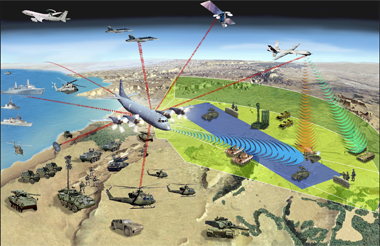 What are "weapons systems"?
In its 21-page "Guideline for
Identifying an Information System as a National Security System," the
Information Technology Laboratory of the US National Institute of Standards and
Technology, defines a weapons system as
What are "weapons systems"?
In its 21-page "Guideline for
Identifying an Information System as a National Security System," the
Information Technology Laboratory of the US National Institute of Standards and
Technology, defines a weapons system as
"a combination of one or more weapons with all related equipment, materials,
services, personnel, and means of delivery and deployment (if applicable)
required for self-sufficiency." (Source)
As such, "weapons systems" are composed of various parts. In a course on "Naval Weapons Systems," US Navy Lieutenant Lynne B. Fowler, identifies the basic "Components of a Weapons System" as follows:
Or, in the words of US Marine Corps Major Michael G. Chlebik, who reminds us of the importance of the "supporting communications" which link various components:
"The major components are the weapon itself, at least one sensor associated with that hardware, and a command and control subsystem with its supporting communications to link the sensor information with the weapon itself, and to control the weapon's actual functioning." (Source)
Major Weapons Systems:
Not just the things that go bang!
For a listing of
America's "Major Weapons Systems" one of the best sites is that produced by the
Federation of American Scientists. It provides a comprehensive web resource
detailing all manner of "US
weapon systems."
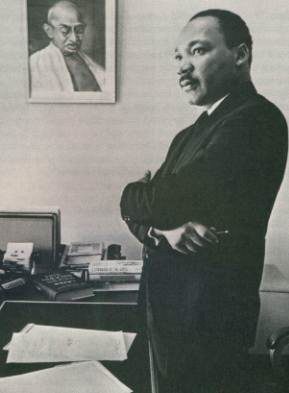 But if you want to go straight
to the very centre of what Martin Luther King, Jr., called “the
greatest purveyor of violence in the world,” then the best place to start is
the US Department of Defense (DoD) itself. Take for example, the Pentagon’s 2009
Budget Request Summary Justification. Of particular interest is the
65-page section in this document summarizing DoD's request for the $184 billion
it wants for "Major
Weapons Systems."
But if you want to go straight
to the very centre of what Martin Luther King, Jr., called “the
greatest purveyor of violence in the world,” then the best place to start is
the US Department of Defense (DoD) itself. Take for example, the Pentagon’s 2009
Budget Request Summary Justification. Of particular interest is the
65-page section in this document summarizing DoD's request for the $184 billion
it wants for "Major
Weapons Systems."
The "highest profile" of these programs, i.e., the most expensive of these Major Weapons Systems are "designated as Major Defense Acquisition Programs (MDAP)."
Among the 41 known exhibitors planning to show their stuff at "Secure Canada 2008" there are at least nine involved in one or more these top MDAPs. In fact, only five of the Top 25 MDAPs do not seem to have any participation by the exhibitors that we know are planning to attend "Secure Canada 2008." For details, see "The Role of 'Secure Canada 2008' Exhibitors in America's MDAPs."
Although there are almost 20 different "missiles and munitions" on the Pentagon's list of "major Weapons Systems"—including "Missile Defense" weapons (Boeing, Lockheed Martin, Northrop Grumman, Raytheon), the Joint Direct Attack Munition (Boeing), and the Small Diameter Bomb (Boeing)—most of the systems cited in this Pentagon document are actually vehicles: warplanes, warships, tanks, etc. These include the air-, sea- and land-based “platforms” that "deliver" individual weapons to their targets. Such "delivery systems" are among the most important, and expensive, parts of whole weapons systems.
Warplanes, Warplanes and
more Warplanes
Perusing the DoD’s list one can’t help but notice that many of the "Major
Weapons Systems" that it wants more money for are in the "Aircraft" category.
Among them are many warplanes that are manufactured, in large part, by the
biggest of the weapons producers coming to "Secure Canada 2008," namely
Boeing. This one company has helped design and build numerous US military
aircraft. In fact, Boeing is listed as a prime contractor for upgrades to
modernize ten of the warplanes that the Pentagon includes on its current wish
list under the category of "major weapons systems":
V-22 Osprey
AH-64 Apache
CH-47F Chinook
E-6 Mercury
EA-G18 Growler
F/A-18E/F Hornet
P-8A Poseidon
C-17 Globemaster
F-15E Eagle
F-22 Raptor
Among these warplanes, just over half are classified as Attack or Fighter aircraft, meaning their prime function is to launch missiles, bombs and other munitions. This is signified by the first letter in their designation, namely A, EA or F. The other Boeing contributions to the aircraft list include warplanes that provide transportation for troops and their equipment (C-17 and CH-47F), Command, Control Communications (E-6) and Intelligence, Surveillance and Reconnaissance (P-8A).
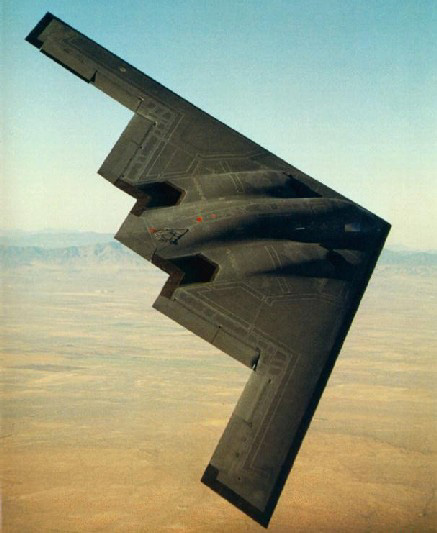 Boeing also had a hand in
manufacturing the B-2 stealth nuclear bomber, which is the most expensive
warplane ever made. Boeing made
Boeing also had a hand in
manufacturing the B-2 stealth nuclear bomber, which is the most expensive
warplane ever made. Boeing made
"the outboard portion of the B-2 stealth bomber wing, the aft center fuselage
section, landing gears, fuel system and weapons delivery system. At its peak in
1991, the B-2 was the largest military program at Boeing, employing about 10,000
people." (Source)
But, besides Boeing, there are several other war-related corporations listed as prime contractors for the "major weapons systems" on the Pentagon's list. While many are designated as Fighters and Attack aircraft, there are various Transport aircraft as well. These include the C-130 Hercules and the JCA (Joint Cargo Aircraft). Although these are not what the uninitiated might consider "major weapons systems," they do transport the tanks and other weapons that warfighters need on the battlefield. As such, the Pentagon considers them "major weapons systems," and so who are we to argue?
The Pentagon, in its wisdom, also lists "Reconnaissance" and "Executive" helicopters, as well as Unmanned Aerial Systems (UAS) as "Major Weapons Systems." On its list of five UAS systems, two are manufactured by known exhibitors at "Secure Canada 2008":
· Raven (AeroVironment)
· Predator and Reaper (General Atomics)
· Shadow (AAI Corporation)
· Global Hawk (Northop Grumman)
C4I
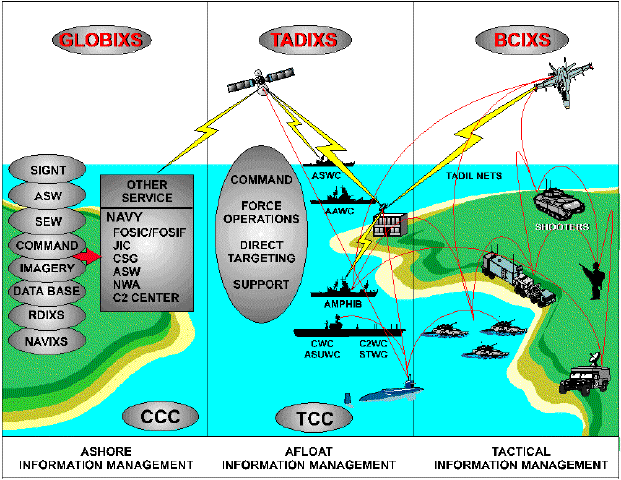 The Pentagon's list of
"major weapons systems" also includes technology in a category called C4I. C4I
stands for Command, Control, Communications, Computers, and Intelligence. This
represents the "brains" behind the operation and it is at the very heart of one
of the main components of the "Secure Canada 2008" arms exhibition, namely
Tech Net North 2008.
This third of “Secure Canada 2008” is a trade show tailored to the marketing of
this brand of military technology and more. It styles itself as
"Canada's Premier C4ISR Exhibition
and Professional Development Conference."
(Note that they've tacked on an "S” and an “R" to add “Surveillance” and "Reconnaissance"
to the alphabet soup of these absolutely-essential weapons-related technologies.
By thus making the net even larger, organizers of this branch of the coming arms
trade show no doubt hope to increase their chances of collecting booth-rental
revenues from an even wider array of military exhibitors.)
The Pentagon's list of
"major weapons systems" also includes technology in a category called C4I. C4I
stands for Command, Control, Communications, Computers, and Intelligence. This
represents the "brains" behind the operation and it is at the very heart of one
of the main components of the "Secure Canada 2008" arms exhibition, namely
Tech Net North 2008.
This third of “Secure Canada 2008” is a trade show tailored to the marketing of
this brand of military technology and more. It styles itself as
"Canada's Premier C4ISR Exhibition
and Professional Development Conference."
(Note that they've tacked on an "S” and an “R" to add “Surveillance” and "Reconnaissance"
to the alphabet soup of these absolutely-essential weapons-related technologies.
By thus making the net even larger, organizers of this branch of the coming arms
trade show no doubt hope to increase their chances of collecting booth-rental
revenues from an even wider array of military exhibitors.)
But the basic point here is that on its own list of "Major Weapons Systems," the Pentagon includes C4I systems, which in and of themselves do not constitute arms or munitions. In the C4I category, DoD lists the "Joint Tactical Radio System" (Boeing, Lockheed), "Future Combat Systems" (Boeing, SAIC), the "Single Channel Ground & Airborne Radio" (ITT, General Dynamics-Land Systems) and the "Warfighter Information Network – Tactical" (Lockheed Martin, General Dynamics-Gov't Systems). Clearly these are all communications systems, and yet the Pentagon considered them essential "Major Weapons Systems."
Satellites and stuff
The Pentagon's list of "Major Weapons Systems" also includes a series of "Space
Based and Related Systems," primarily for communications and targeting. These
include the Global Positioning System (Lockheed Martin, Boeing), the
Transformational Satellite Communications System (Lockheed Martin, Boeing), the
Wideband Global SATCOM System (Boeing), and infrared satellite systems (Lockheed
Martin) used for weapons guidance, target assessment and acquisition,
reconnaissance and other vital aspects of warfighting, particularly for "Missile
Defense" weapons.
Although none of these space-based systems will place munitions or armaments in space, they do represent putting major components of weapons systems into space. These space-based platforms are all considered absolutely essential to the Pentagon's "major weapons systems."
Loopholes of Mass
Destruction:
"Weapons Components are not considered Weapons"
All this goes to show
that the various, constituent parts of weapons systems, even "major" ones, are
no longer physically connected. In fact, these weapons components—more often
than not—are separated by hundreds if not thousands of kilometres. To the
layperson, each part within a weapons system may seem to be a completely
distinct and separate piece of technology that is unrelated to any weapon. The
truth about the interconnectivity of the components within major weapons systems
is even more difficult to convey to the uninitiated because these parts of the
whole often have non-military functions as well.
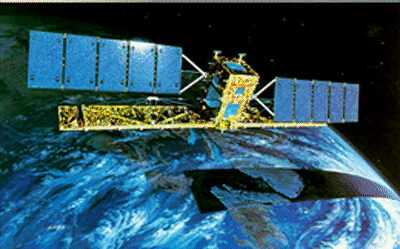 For example, the information
for locating and tracking a weapon's target (what used to be considered a
weapon's “sights") may be coming from Canada's
RADARSAT satellite located 800 kilometres above the earth's surface.
RADARSAT has many other functions besides targeting weapons systems and it isn't
considered a weapon, but its data does get used by many a "major weapons system"
in the US arsenal. RADARSAT is therefore undeniably a component within these
major weapons systems.
For example, the information
for locating and tracking a weapon's target (what used to be considered a
weapon's “sights") may be coming from Canada's
RADARSAT satellite located 800 kilometres above the earth's surface.
RADARSAT has many other functions besides targeting weapons systems and it isn't
considered a weapon, but its data does get used by many a "major weapons system"
in the US arsenal. RADARSAT is therefore undeniably a component within these
major weapons systems.
In the case of the US Army’s Eaglevision ground stations—which are designed to actually control the operation of RADARSAT-1 and -2 and to downlink the data from these Canadian satellites to battlefields of Iraq and Afghanistan—this integral component of many "major weapons systems" simply looks like a truck next to a satellite dish.
Meanwhile, the person charged with launching an intercontinental ballistic missile may be sitting at a console ready to push a button (“the trigger”) that is hundreds of miles from the actual launch silo.
While these and so many other subsystems are not in and of themselves considered weapons, they are indispensable components within complete weapons systems. In fact, not only are these crucial ingredients within "Major Weapons Systems," they can even figure prominently in the smooth operation of history's most deadly killing machines, so-called “Weapons of Mass Destruction.”
Lifting Military Export
Restrictions "Lock, Stock
and Barrel"
 A 2004 Oxfam report called "Lock,
Stock and Barrel," shows that looking at "exports of components rather
than entire weapons systems creates a smokescreen that hides the true extent of
the British arms trade."
A 2004 Oxfam report called "Lock,
Stock and Barrel," shows that looking at "exports of components rather
than entire weapons systems creates a smokescreen that hides the true extent of
the British arms trade."
This report "reveals that the [UK] government is applying weaker controls to the export of components, compared to the export of full weapons systems. These double standards allow British-sold weapons components to end up in countries where they could ultimately be used to violate human rights."
"'These aren't simply nuts and bolts we're selling, these components include firing mechanisms, bomb making equipment, guidance systems and gun barrels. It is these deadly components that are key parts of full weapons, without which they would be unusable.
The government has put lives at risk by
setting up false and dangerous double standards. Whether a machine-gun comes in
pieces or ready made—the suffering it can cause in the wrong hands is just the
same,' said Justin Forsyth, Oxfam Director of Policy."
(Source)
Allowing Weapons Bazaars if they only promote Weapons Systems
This same kind of "loophole" or "blind spot" also exists when it comes to justifying large manifestations of the international arms trade, like trade shows or exhibitions that promote the sale and export of components for weapons systems.
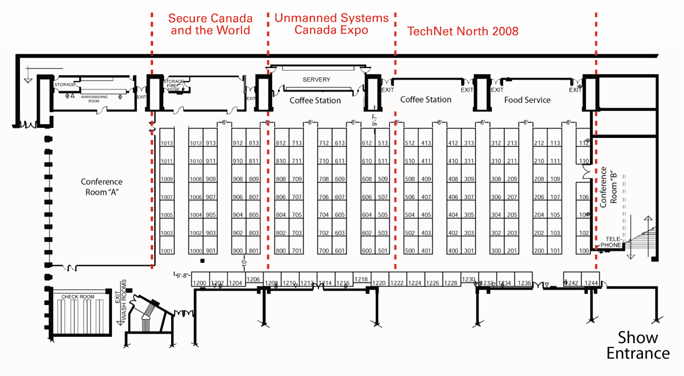 For example
after admitting that "Secure Canada 2008" will include "products and services"
with "defence
applications, including secure communications, surveillance, and command and
control requirements and unmanned systems technologies," Ottawa City staff notes
that:
For example
after admitting that "Secure Canada 2008" will include "products and services"
with "defence
applications, including secure communications, surveillance, and command and
control requirements and unmanned systems technologies," Ottawa City staff notes
that:
"It is the opinion of staff that given the range of products and services being marketed during this event, it does not meet the test of what one would reasonably expect to find in an 'arms exhibition.'”
Obviously then, much work needs to be done to educate people that weapons these days are much more than just "the pointy end of the stick," or the "thing that goes bang." One way to start is to examine the wide range of exhibitors that showcase their weapons systems' components at military trade shows like "Secure Canada 2008." Such events assemble in one place an impressive diversity of contractors that collectively manufacture an array of military components that together compose the major weapons systems used to wage wars around the world.
Although tables within the small individual booths at such "arms exhibitions" may not actually be displaying real firearms—or other complete weapons systems like B-2 nuclear bombers—they are nevertheless part and parcel of the international arms trade.
Please sign online PETITION now to "Stop Ottawa's Arms Shows."
(Print version: Here is a printable version of the petition that you can use to get additional signatures.)
Email: Tell the Mayor, City Councillors and Staff what you think!
Related article:
"What do they actually mean by "Defence," "Security" and
"Public Safety"?
This webpage was produced by
the
Coalition to Oppose the Arms Trade (COAT)
as part of the COAT
campaign to oppose
"Secure Canada 2008"
(Sept.30-Oct.1, 2008)